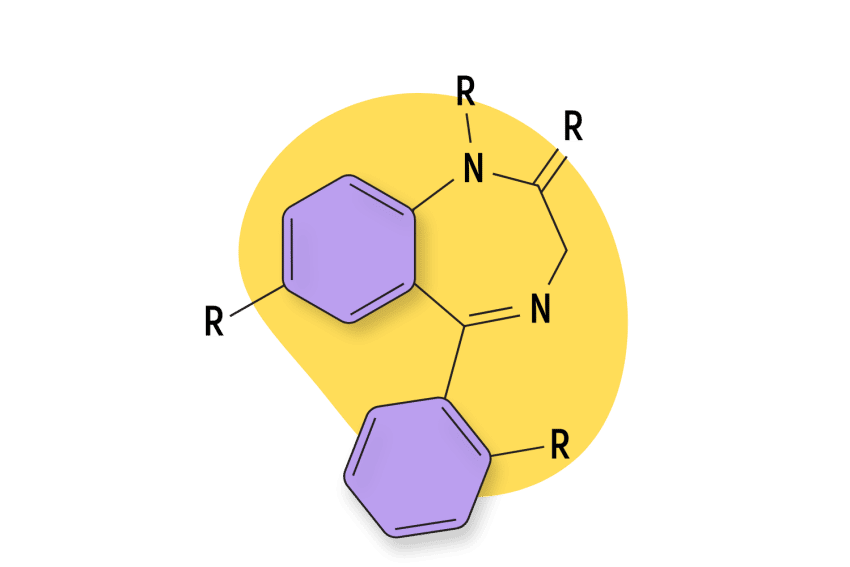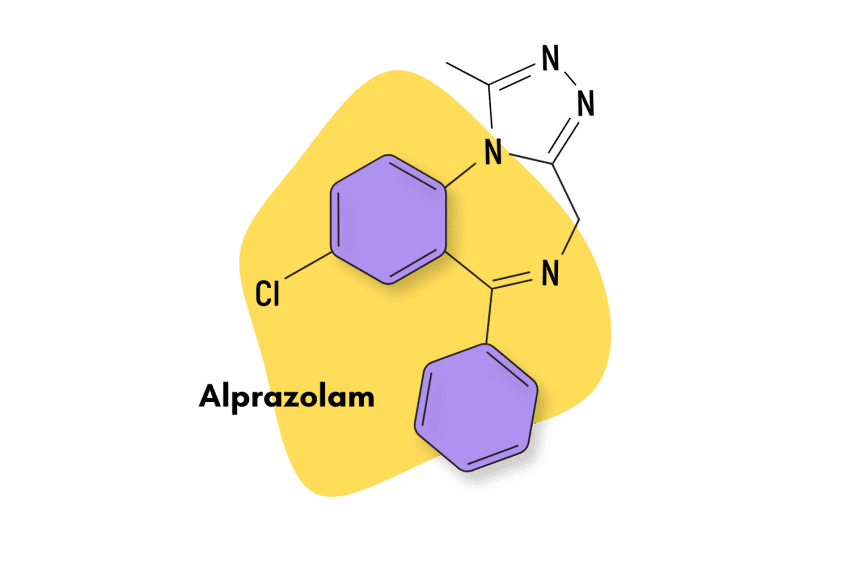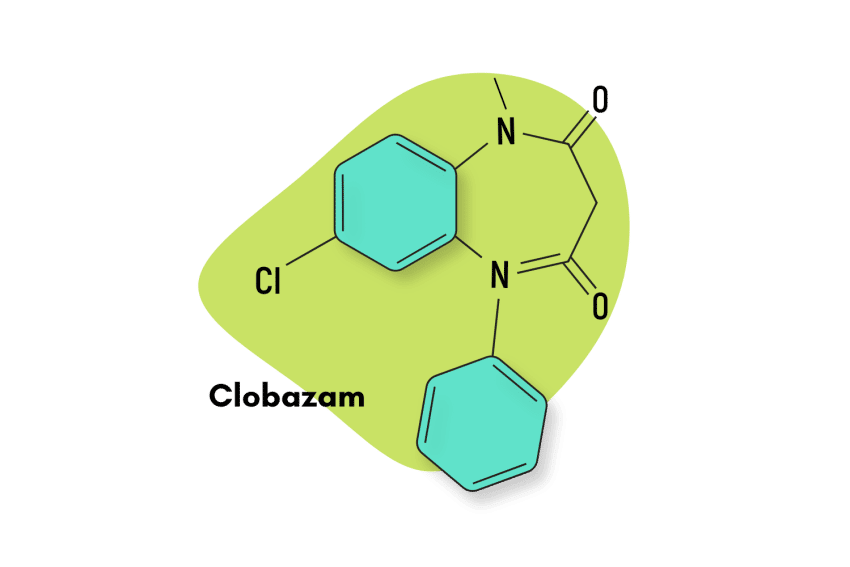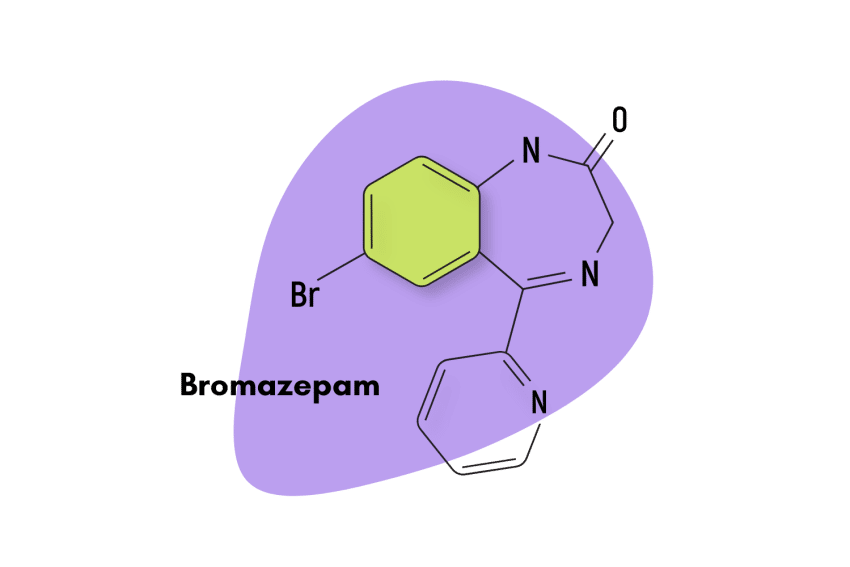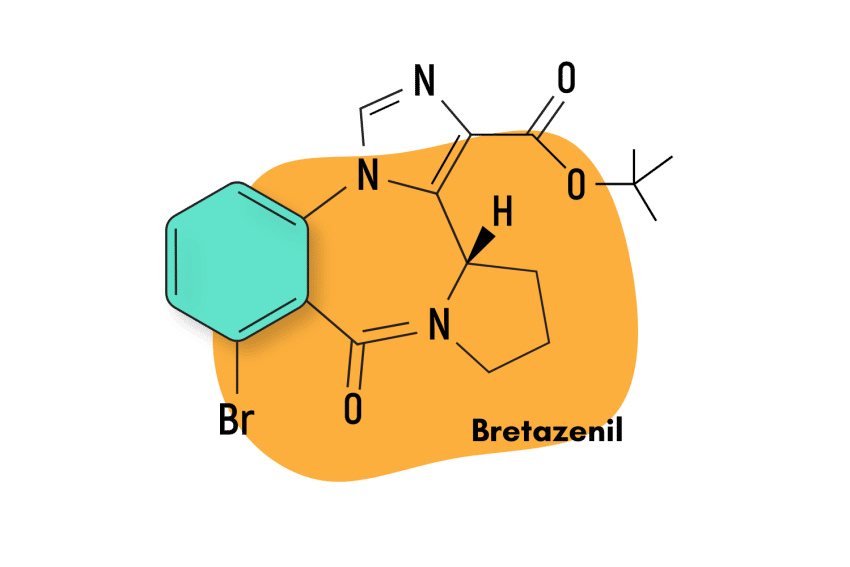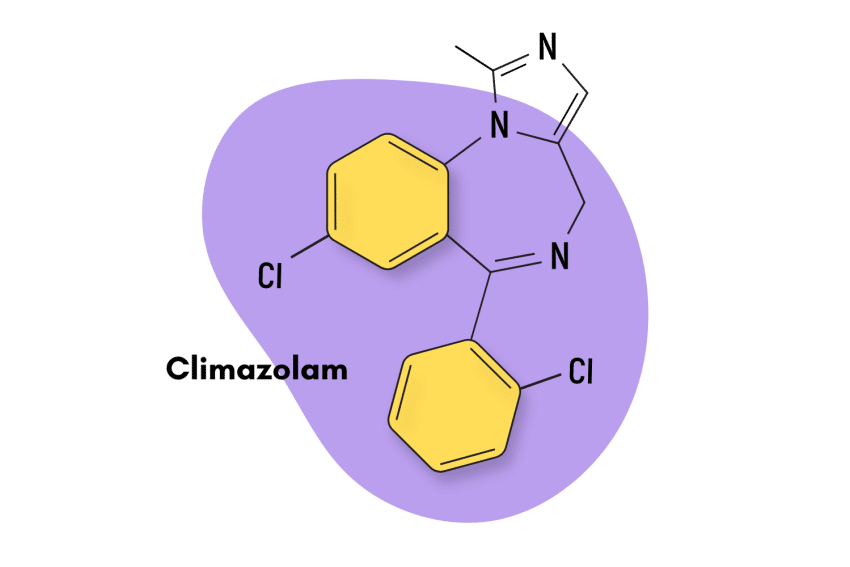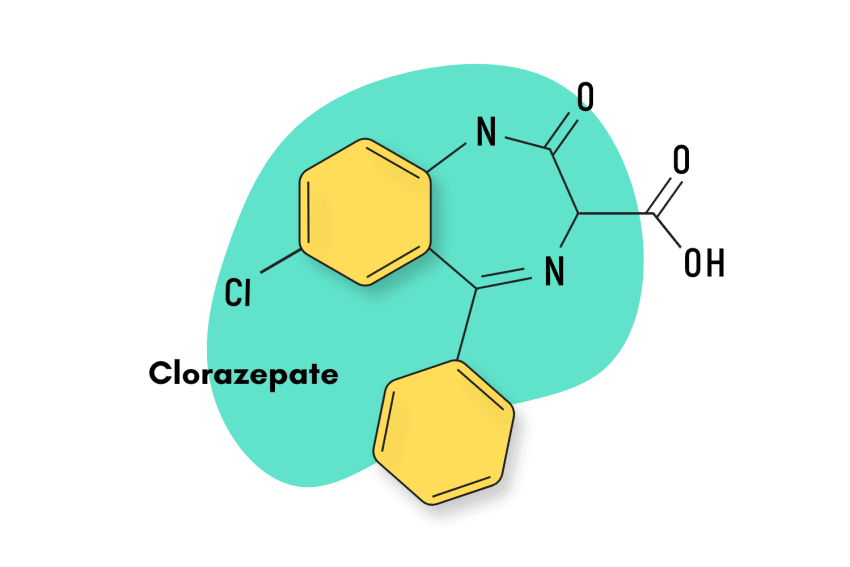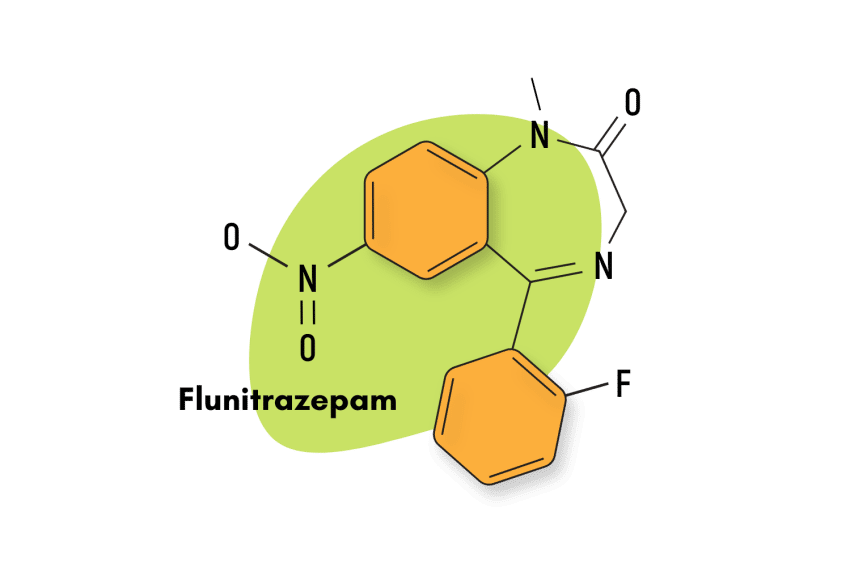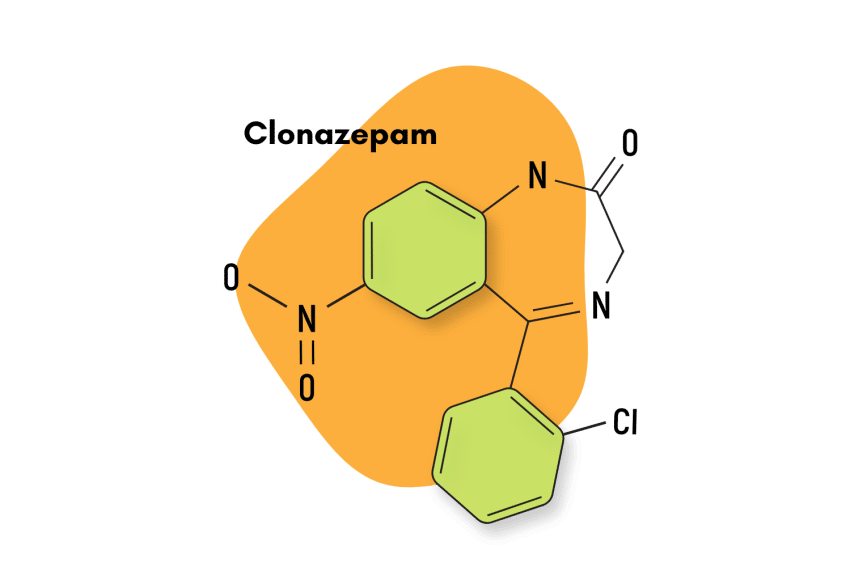Desmethylflunitrazepam Fact Sheet & Harm Reduction Guide
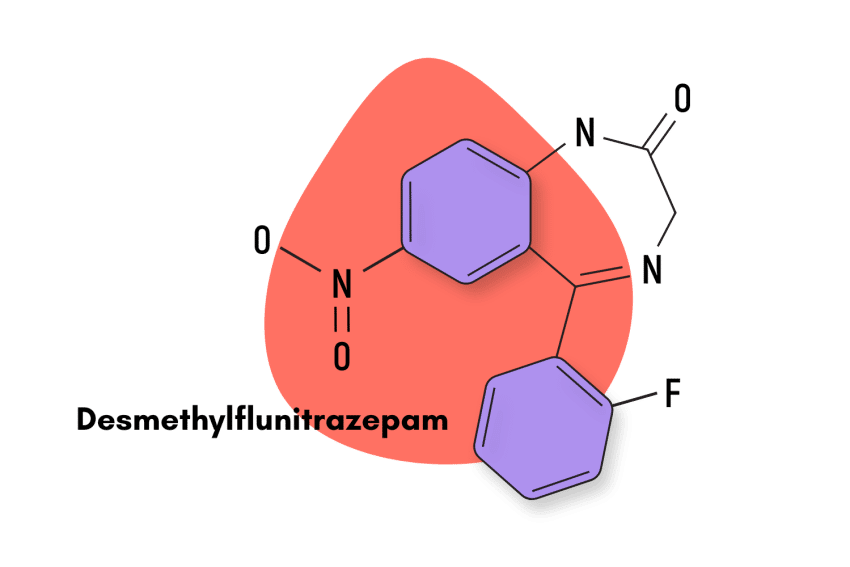
Desmethylflunitrazepam, also known as fonazepam, norflunitrazepam, and RO05-4435, is a powerful benzodiazepine drug and derivative of flunitrazepam — commonly referred to as Rohypnol or “the date-rape drug.”
As an active metabolite of flunitrazepam —one of the most potent benzodiazepine sedatives —desmethylflunitrazepam is highly likely to have similar sedative properties to its parent compound [1].
Desmethylflunitrazepam is not used therapeutically but is used recreationally. It was first reported as a New Psychoactive Substance (NPS) in Europe in 2014.
There’s concern about this drug’s risks, especially due to its similarities to flunitrazepam.
For the time being, the relative popularity of desmethylflunitrazepam does not appear to be significant, as only two major drug seizures have been reported, one in Germany and one in Sweden, both in 2016 [1].
Desmethylflunitrazepam Specs
| Status | Research chemical |
| Common Dosage | Common doses range from 0.5 to 3 mg |
| PubChem ID | 520217 |
| CAS# | 2558-30-7 |
IUPAC Name: 5-(2-fluorophenyl)-7-nitro-1,3-dihydro-2H-1,4-benzodiazepin-2-one
Other Names: Norflunitrazepam, Ro-4435, and Fonazepam
Metabolism: desmethylflunitrazepam results from the in vivo demethylation of the parent compound flunitrazepam. However, there is no specific information related to its biotransformation. Additionally, fonazepam can also be a photodecomposition product of flunitrazepam [2].
Duration of Effects: Unknown.
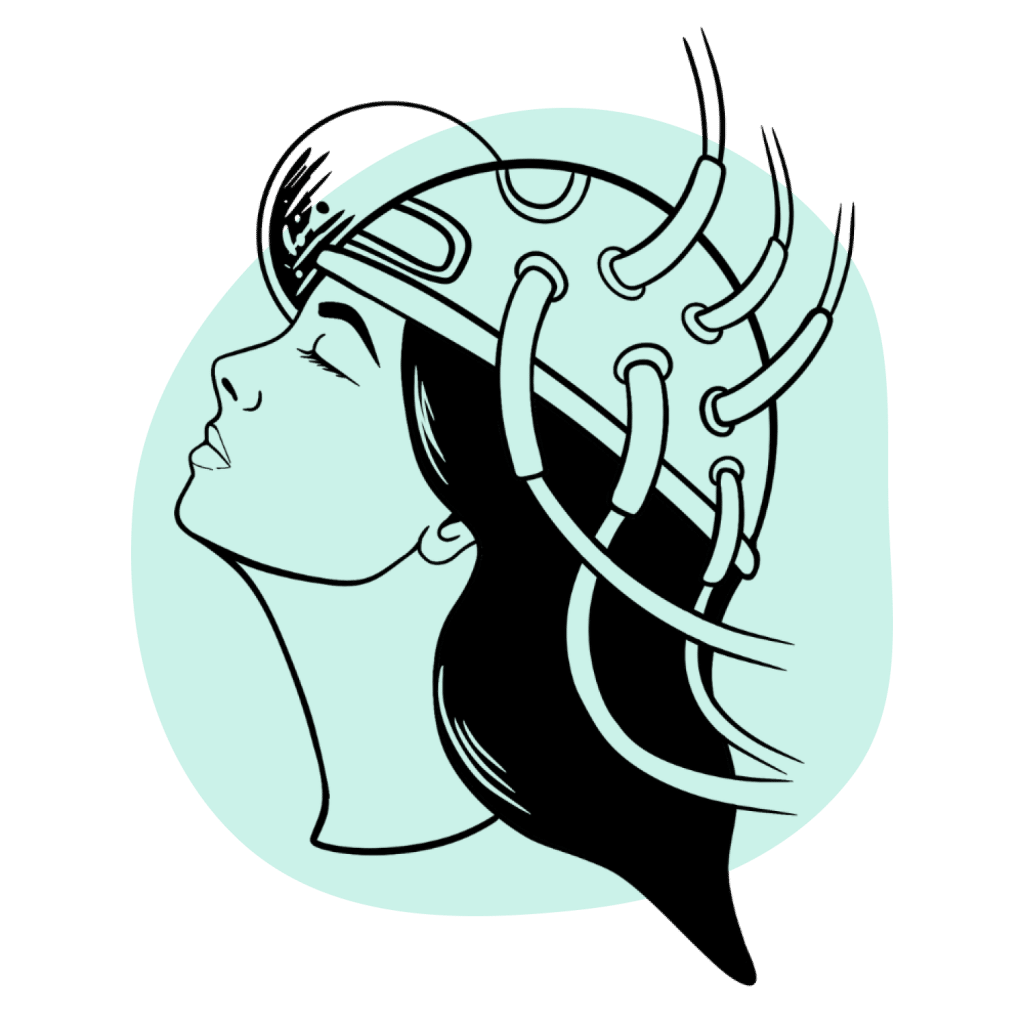
Benzodiazepine Dosage Equivalency Calculator
**Caution:** Benzodiazepines have a narrow therapeutic window. Dose equivalents may not be accurate in higher doses.
This calculator does not substitute for clinical experience and is meant to serve only as a reference for determining oral benzodiazepine equivalence.
Please consult a medical practitioner before taking benzodiazepines.
How Does Desmethylflunitrazepam Work?
Desmethylflunitrazepam is known to have the same primary mechanism of action as its parent compound (flunitrazepam) and most other benzodiazepines. This would, of course, be the traditional GABA-mediated pathway.
When benzodiazepines enter the body, they bind to the benzodiazepine site on GABA receptors located along the brain and central nervous system. Once bound, these molecules exert what is known as an “allosteric effect” on the GABA-A receptors. An allosteric modulation is when an enzyme binds to a molecule at a site other than the enzyme’s active site.
This is important to understand in the sense that there are plenty of molecules that interact with GABA-A receptors to produce comparable effects to benzos, but they might not accomplish this through allosteric means.
The allosteric interaction has the effect of increasing GABA’s natural inhibitory function. It does this by increasing the opening frequency of chloride channels located in the cell and thus hyperpolarizing neurons which are then less likely to produce electrical signals known as action potentials.
In basic terms, GABA makes it much harder for electrical signals to travel around the brain — resulting in sedation and reduced anxiety.
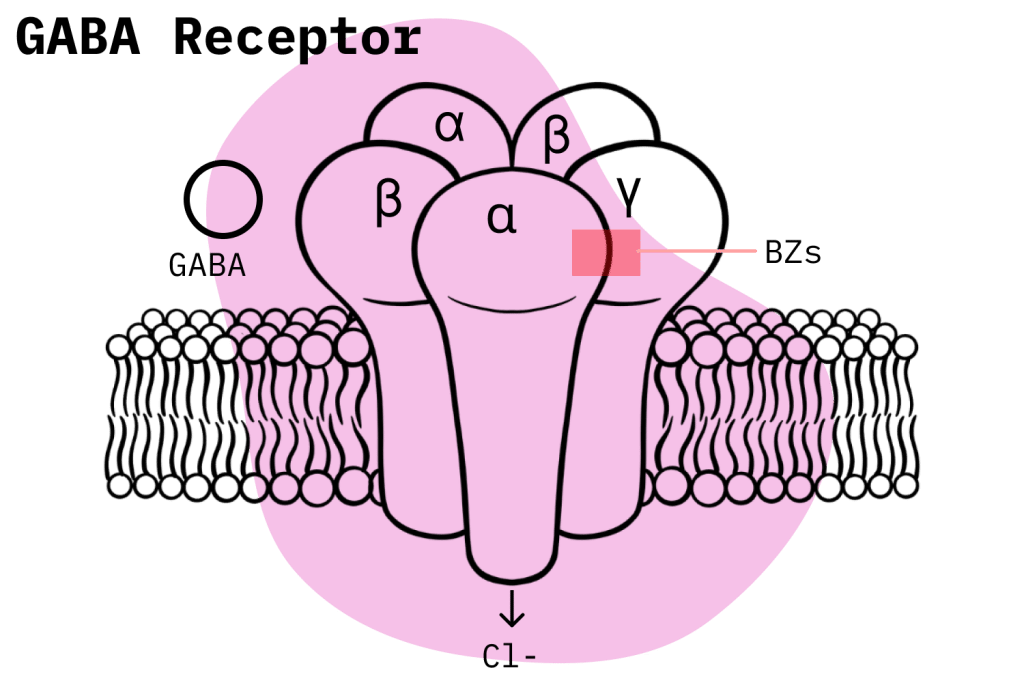
Desmethylflunitrazepam Specifics
Desmethylflunitrazepam is also suspected of having some of the same secondary mechanisms of action as flunitrazepam. Mainly, this would be the ability to diminish the transmission of essential signal substances like dopamine, noradrenaline, serotonin, and acetylcholine [1].
We also have some preliminary information regarding desmethylflunitrazepam’s pharmacokinetics. For instance, it has a binding activity (log IC50) of 0.176 and a predicted value of 0.565 [1]. These values mean that desmethylflunitrazepam has an inferior binding affinity than flunitrazepam and, as such, suggests it is of lower potency. The fact that desmethylflunitrazepam causes less sedation than flunitrazepam also implies this. Structural differences between these molecules likely explain this difference.
Is Desmethylflunitrazepam Safe? Risks & Side Effects
Due to the scarcity of peer-reviewed research on the subject, it is not easy to come up with meaningful conclusions about the risk level of desmethylflunitrazepam. However, that being said, the general similarities between most benzodiazepines mean that, despite meaningful differences, most benzos share a baseline level of risk.
In the case of desmethylflunitrazepam, until more research is conducted, we’re forced to refer back to this general view of benzodiazepines.
In this sense, most benzodiazepines, when taken responsibly, are relatively safe compounds. They only tend to cause severe health events or fatalities when seriously misused. But given that desmethylflunitrazepam has no approved medical use and is only available as a designer drug, those who use it are likely doing it recreationally.
If we had access to some basic pharmacological knowledge about desmethylflunitrazepam, we could make some educated assumptions about how it might compare to other benzos, but we don’t. Nonetheless, given that its parent compound is flunitrazepam, it is not unlikely that desmethylflunitrazepam is also highly potent. If this is the case, that would be a significant risk factor.
Additionally, if we assume that desmethylflunitrazepam has similar pharmacology, there are also other risks to consider.
It is well known that flunitrazepam has an unusually strong amnesic effect, which makes it liable to be used in sexual assault and other situations involving a victim unknowingly consuming a sedative. If the same is true of desmethylflunitrazepam, then this aspect of its pharmacology also needs to be considered.
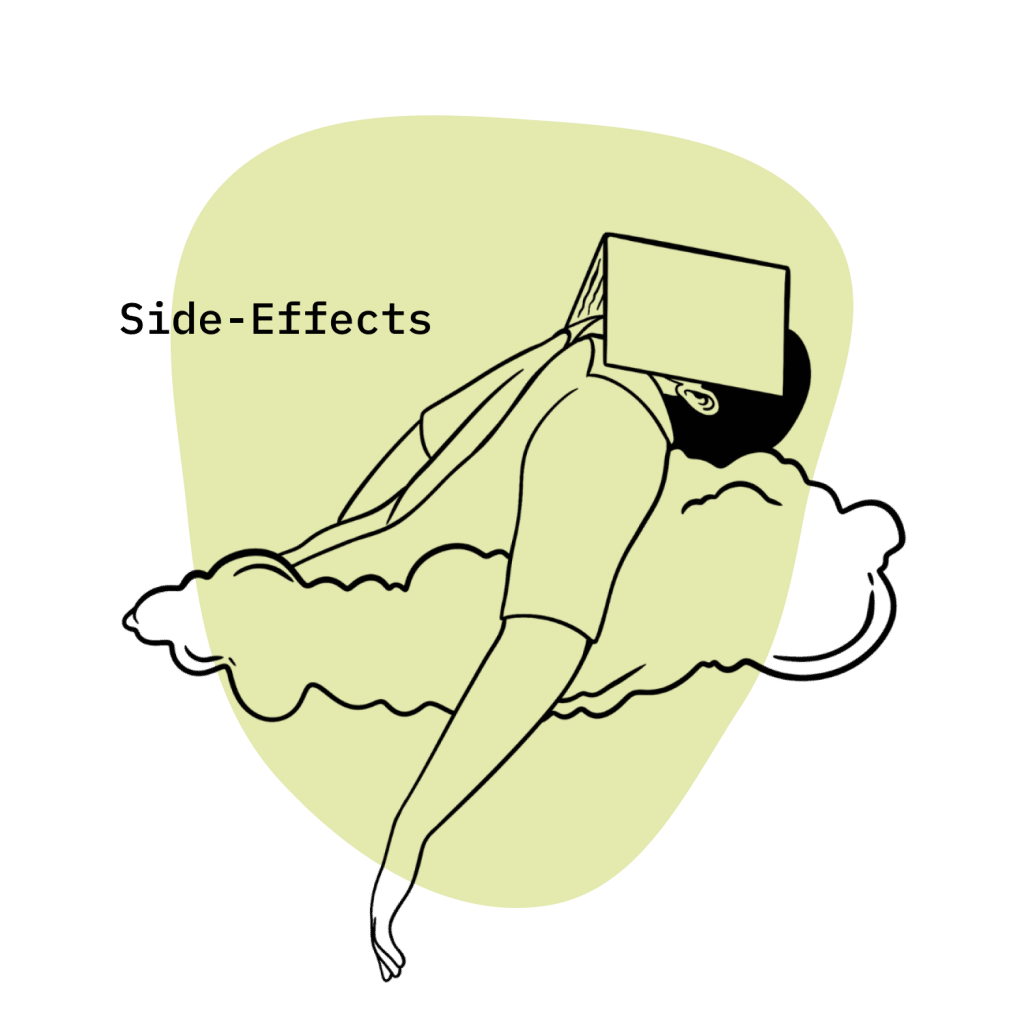
Side Effects of Desmethylflunitrazepam
Searching for the side effects of desmethylflunitrazepam on online databases returns no meaningful results. However, it’s likely the side effect profile of this drug is similar to that of its parent drug, flunitrazepam.
Flunitrazepam use is much more controlled than other benzodiazepines, but it is still an approved medication.
The following side effects have been linked to its use [3]:
- Aggression
- Amnesia (blackout)
- Confusion
- Drowsiness
- Excitability
- Headaches
- Impaired reaction time and motor coordination
- Impaired mental functioning and judgment
- Sedation
- Sleep
- Slowed breathing and heart rate
- Slurred speech
A residual effect the morning after ingestion, commonly known as the hangover effect, is the most common side effect of flunitrazepam use.
Benzodiazepine Withdrawal & Dependence
Benzodiazepine use can often lead to the development of physical dependence and withdrawal symptoms. This ever-present risk is the reason why all benzodiazepine medications are classified at least as Schedule IV compounds in the Controlled Substances Act.
But just how prevalent is the dependence liability regarding benzodiazepine treatment? Answering this question tends to get slightly more complex as there are several traits that can influence just how addictive a benzodiazepine can become.
For instance, the relative potency level of a benzodiazepine tends to be quite meaningful regarding its dependence liability. The stronger a benzodiazepine compound is, the easier it is to become dependent. This means that full agonist benzodiazepines —benzos that elicit the maximum response possible at a receptor —tend to have a much higher dependence liability than partial agonist benzodiazepines, which are benzos that have only partial efficacy at the receptor.
Another important factor is the duration of effects, but it’s not so clear cut. For psychological reasons, as well as the possibility of inter-dose withdrawal symptoms, short-acting benzos lead is more likely to lead to behaviors linked to dependence. However, at the same time, long-acting benzos have the risk of steadily accumulating in the body throughout treatment, increasing the likelihood of dependence. In terms of avoiding dependence, it is best to aim for an intermediate-acting benzodiazepine.
In the case of desmethylflunitrazepam, we don’t have solid knowledge about these factors, and thus it’s hard to make definitive statements. But due to the incredibly potent nature of its parent compound, we can probably assume it’s of high potency and adjust our risk profile accordingly.

Harm Reduction: Desmethylflunitrazepam
Users of online designer drugs should be aware of basic harm reduction strategies. Indeed, having some simple recommendations in mind can be very effective at mitigating the amount of risk users end up exposing themselves to. The unregulated context of online drug sales makes this need much more pressing, as there is a fair amount of recreational misuse going on.
To start with, designer drug users should buy a benzodiazepine test kit online and use it to verify the purity of their drug purchases. There is no guarantee for purity when your buy from unregulated drug vendors!
In the context of recreational use, users should try their best to avoid mixing potent pharmacological compounds and doing these drugs by themselves. At the very least, they should warn a friend of their intended plans. Taking drugs in halves or even in one-quarter portions is also a good heuristic. This allows users to hedge against the possibility of an overdose.
Lastly, recreational benzodiazepine users should consider purchasing flumazenil and learning how to use it. Flumazenil is a benzodiazepine receptor antagonist and can thus work to revert the effects of a benzo overdose.

Desmethylflunitrazepam Drug Interactions
Anyone currently using desmethylflunitrazepam —or any other benzo for that matter —needs to be properly aware of the dangers that can arise due to drug interactions.
The main risk comes from other compounds that can depress the central nervous system. Concomitant use of depressant compounds leads to an exponential increase in the levels of inhibition as both compounds end up potentiating the other’s effects. Often, the result can end up being severe respiratory depression, a condition that places a user at serious risk of death.
Dissociative compounds can also be risky because they increase the risk of vomiting. This would not be that dangerous by itself, but if a user happens to be unconscious, then vomiting can lead to death by choking.
Finally, there is also a risk in combining stimulants with benzodiazepines and other depressants. The problem is that the stimulant effects of a drug like caffeine can make a user less sensitive to the effects of the depressant compound. This can then make the patient think that he should take more of the depressant compound, leading to an increase in his risk level.
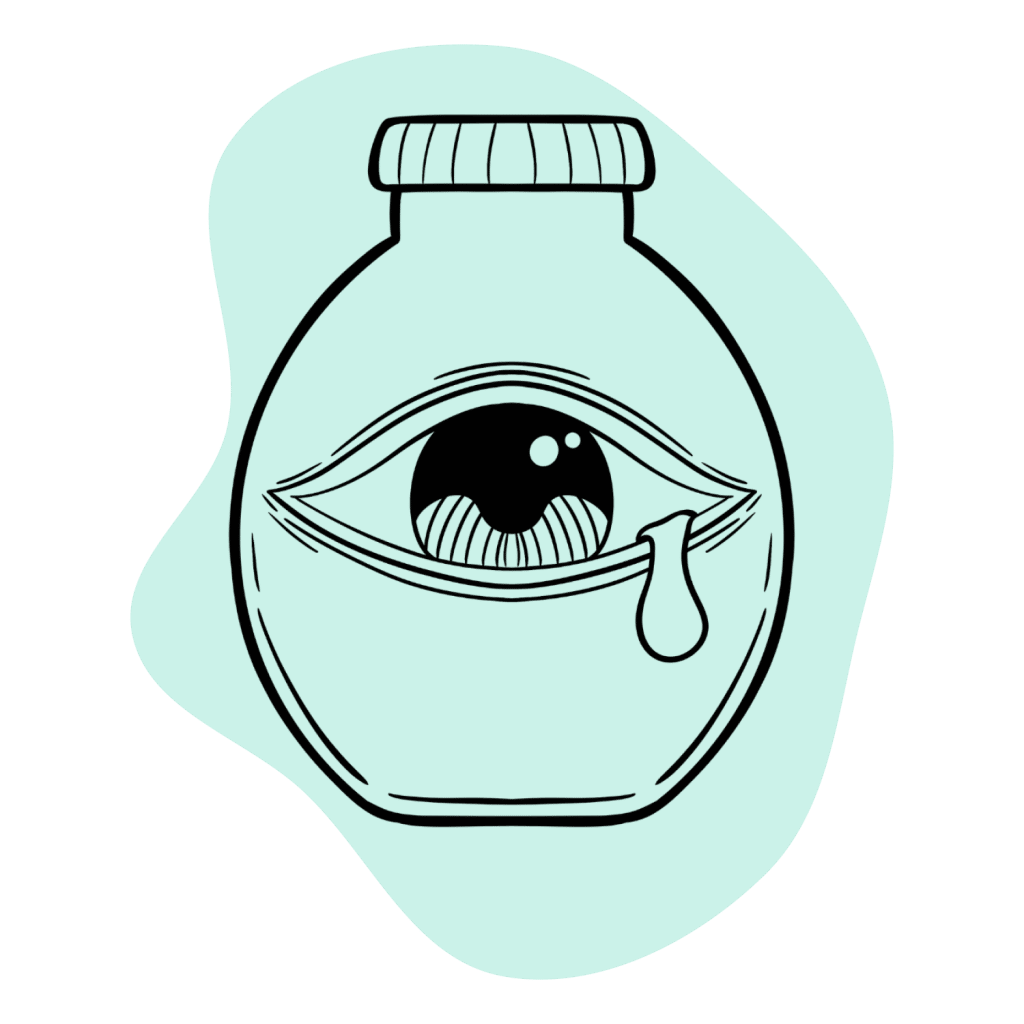
Desmethylflunitrazepam Contraindications
Did you know that all benzos share a standard set of contraindications?
Contraindications for benzodiazepines include:
- Bronchitis
- Chronic obstructive pulmonary disease (COPD)
- Conjunctive use of barbiturates, opiates, or those suffering from alcoholism
- Driving and the use of heavy machinery (applies mostly to hypnotic benzos)
- Intellectual disabilities due to frequent paradoxical reactions
- Major depression
- Myasthenia gravis
- Over the age of 65 (high risk)
- Personality disorders
- Pregnancy and use during lactation
- Sleep apnea
Similar Benzodiazepines
Based on what little we know, here are some benzodiazepines with a certain level of similarity to desmethylflunitrazepam.
Flunitrazepam
Flunitrazepam, the parent compound of desmethylflunitrazepam, is bound to have a certain level of similarity with its byproduct, both pharmacologically and structurally. We do know that based on the lower GABA binding value of desmethylflunitrazepam, flunitrazepam is likely the more potent compound.
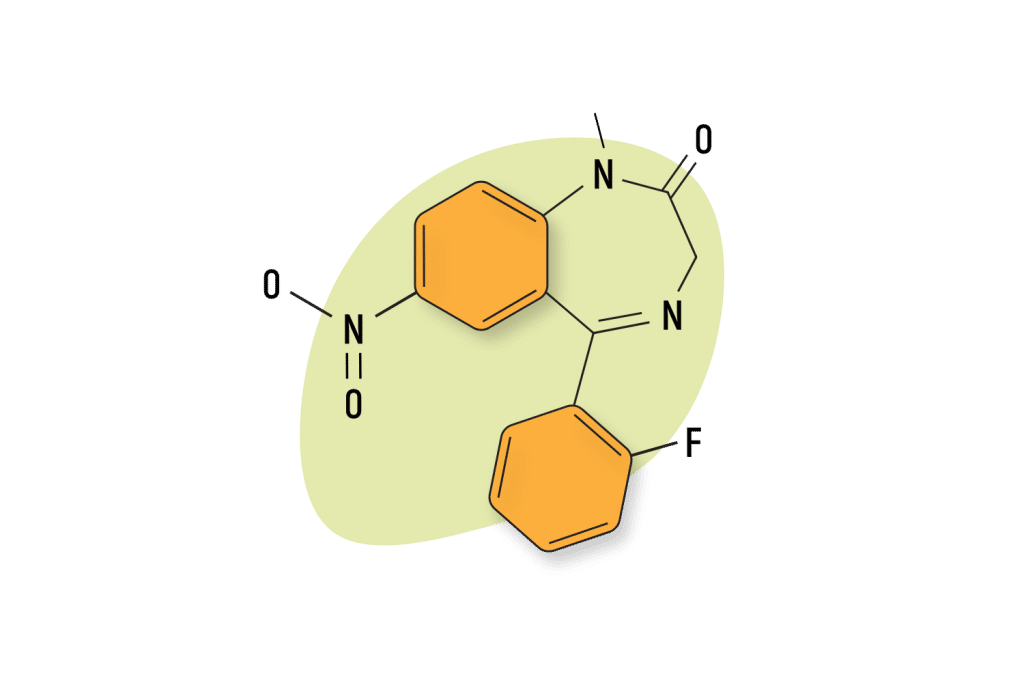
Nitrazepam
In structural terms, flunitrazepam is essentially nitrazepam with the addition of a fluoro group at position two and a methyl group at position one. This would make nitrazepam the progenitor of flunitrazepam, and we could also expect some similarities to desmethylflunitrazepam.
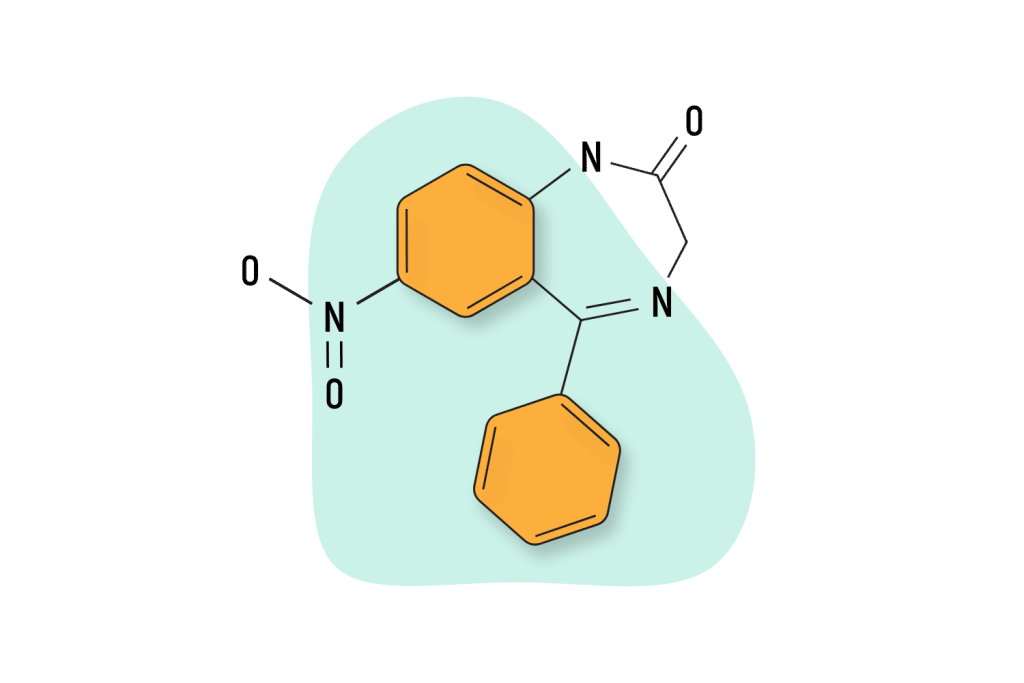
Natural Alternatives to Benzodiazepines
You shouldn’t think that benzodiazepines are the only way you can treat your ailments! There is now a great selection of science-backed natural products that can work to very similar effects.
Kava
The kava plant (Pyper methysticum) is getting quite popular, so you might’ve heard of it already. This tropical species is not a benzodiazepine compound, but many of its active ingredients, known as kavalactones, produce very similar effects on the body’s GABA-A receptors. Through this mechanism of action, kava has been found to produce comparable natural anxiolytic and sedative effects, and it can also work as a sleep aid [4]! However, it should be noted that it can’t produce anti-convulsant and hypnotic effects like benzodiazepines, and any effects it does produce are of lowered potency in comparison.
But you should know that kava is a much safer product than pharmacological benzodiazepines. Even though it does exist, the potential for abuse and dependence is a lot lower.

Kratom
Kratom (Mitragyna speciosa) is both a stimulant and sedative, depending on the dose. High doses of kratom are sometimes used for the same applications as benzodiazepines — to improve sleep, alleviate anxiety, and ease muscle pain.
Kratom doesn’t come without its fair share of risks, and plenty of people have become addicted to this plant.
But it’s not as bad as it’s made out to be.
The reality is this: when kratom is taken responsibly, and by itself, it’s much safer than prescription alternatives. It still can cause dependence, but usually only in those who take large amounts for extended periods.
You might not be aware of kratom’s incredible range of effects. Depending on the dosage, kratom can elicit stimulant (cognitive), euphoric, analgesic, anxiolytic, and sedative benefits [5]. It has also been found to be effective as a treatment for withdrawal symptoms stemming from alcohol and opioids and as a weight-loss supplement.

Desmethylflunitrazepam FAQs
When was desmethylflunitrazepam first synthesized?
Sternbach achieved the synthesis of fonazepam in 1963 in Hoffmann-La Roche laboratories.
In what formulations is desmethylflunitrazepam available for purchase?
Desmethylflunitrazepam is available in both tables and powder form.
According to online user data, what are the common routes of administration for desmethylflunitrazepam?
The most common routes of administration are oral and sublingual (under the tongue).
References
- Katselou, M., Papoutsis, I., Nikolaou, P., Spiliopoulou, C., & Athanaselis, S. (2017). Metabolites replace the parent drug in the drug arena. The cases of fonazepam and nifoxipam. Forensic toxicology, 35(1), 1-10.
- Busker, R. W., van Henegouwen, G. M. B., Kwee, B. M., & Winkens, J. H. (1987). Photobinding of flunitrazepam and its major photo-decomposition product N-desmethylflunitrazepam. International journal of pharmaceutics, 36(2-3), 113-120.
- Substance Abuse and Mental Health Services Administration (US); Office of the Surgeon General (US). Facing Addiction in America: The Surgeon General’s Report on Alcohol, Drugs, and Health [Internet]. Washington (DC): US Department of Health and Human Services; 2016 Nov. [Table], Rohypnol® (Flunitrazepam)
- Sarris, J., Stough, C., Bousman, C. A., Wahid, Z. T., Murray, G., Teschke, R., … & Schweitzer, I. (2013). Kava in the treatment of generalized anxiety disorder: a double-blind, randomized, placebo-controlled study. Journal of clinical psychopharmacology, 33(5), 643-648.
- Eastlack, S. C., Cornett, E. M., & Kaye, A. D. (2020). Kratom—Pharmacology, clinical implications, and outlook: a comprehensive review. Pain and therapy, 9(1), 55-69.

